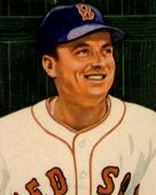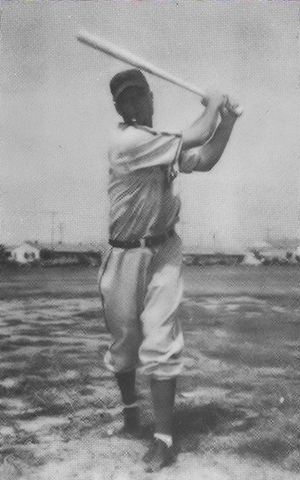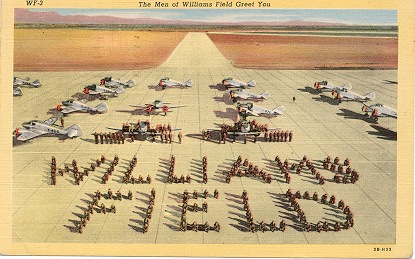

|
|
Lou Stringer
Date and Place of Birth: May 13, 1917 Grand Rapids, Michigan
Died: October 19, 2008 Freedom Village, Lake Forest, California
Baseball
Experience:
Major League
Position:
Second Base
Rank:
Private
Military Unit:
USAAF
Area Served: United States
 Louis
B “Lou” Stringer was born on May 13, 1917 in
Louis
B “Lou” Stringer was born on May 13, 1917 in
 Stringer
not only batted .272 with
Stringer
not only batted .272 with
On October 29, 1942,
Stringer entered military service with the Army Air Force. He spent
his entire time at Williams Field in
Stringer graduated from Air
Force Mechanics School at Williams Field in January 1943 and was a
mainstay of the Williams Field Flyers baseball team. The 1943 Flyers
lineup included Stan Goletz of the White Sox, Paul Soderburg of
Stringer was selected to the
all-Army team by the Army Times publication.
 In
1944, Goletz and Flynn were back, along with Lyman Greer of
In
1944, Goletz and Flynn were back, along with Lyman Greer of
The 1945 Williams Field Flyers played in the Eastern Division of the Western Flying Training Command Baseball League. They won five straight games to cruise to the state semi-pro title and Davis-Monthan, 9 to 1, in the final on July 29.
Private Stringer was
discharged from service on December 11, 1945. He joined the Cubs the
following season and played 80 games, batting .244. He was back with
Lou Stringer passed away on October 19, 2008, at Freedom Village, Lake Forest, California. He was 91.
Thanks to Chris McDoniel for help with information on Williams Field and for allowing me to use the Williams Field postcard. You get more information on Williams Field at Arizona in World War II.
Created March 8, 2008. Updated October 24, 2008.
Copyright © 2008 Gary Bedingfield (Baseball in Wartime). All Rights Reserved.